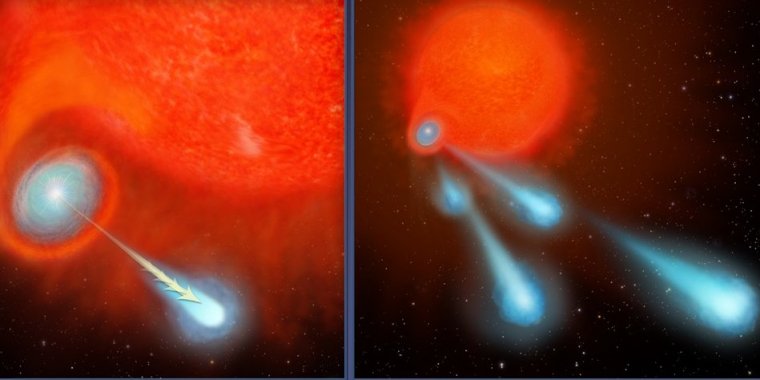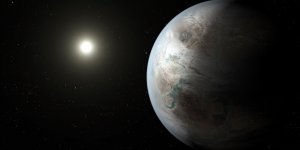| News / Space News |
Hubble Detects Giant 'Cannonballs' Shooting from Star
NASA | OCTOBER 8, 2016
NASA's Hubble Space Telescope has detected superhot blobs of gas, each twice as massive as the planet Mars, being ejected near a dying star. The plasma balls are zooming so fast through space it would take only 30 minutes for them to travel from Earth to the moon. This stellar "cannon fire" has continued once every 8.5 years for at least the past 400 years, astronomers estimate.

The binary-star system V Hydrae is launching balls of plasma into space. ![]()
The fireballs present a puzzle to astronomers, because the ejected material could not have been shot out by the host star, called V Hydrae. The star is a bloated red giant, residing 1,200 light-years away, which has probably shed at least half of its mass into space during its death throes.
Red giants are dying stars in the late stages of life that are exhausting the nuclear fuel that makes them shine. They have expanded in size and are shedding their outer layers into space.
The current best explanation suggests the plasma balls were launched by an unseen companion star.
According to this theory, the companion would have to be in an elliptical orbit that carries it close to the red giant's puffed-up atmosphere every 8.5 years. As the companion enters the bloated star's outer atmosphere, it gobbles up material.
This material then settles into a disk around the companion, and serves as the launching pad for blobs of plasma, which travel at roughly a half-million miles per hour.
This star system could be the archetype to explain a dazzling variety of glowing shapes uncovered by Hubble that are seen around dying stars, called planetary nebulae, researchers say. A planetary nebula is an expanding shell of glowing gas expelled by a star late in its life.
YOU MAY ALSO LIKE




